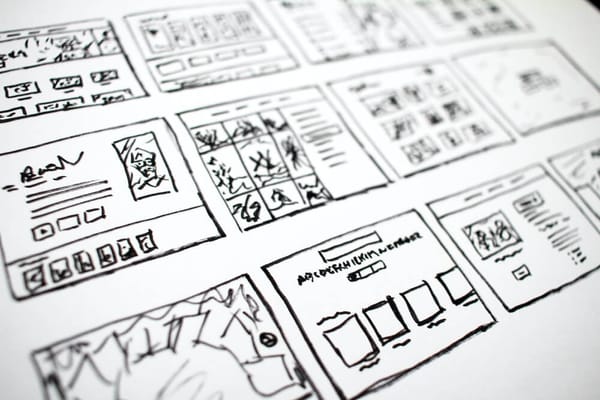Are you underestimating the power of customer success plans in your client interactions? Well, get ready to see their true potential in enhancing customer relationships and driving results.
From understanding their importance to managing clients' expectations and implementing them effectively, this comprehensive guide will equip both beginner and seasoned Customer Success Managers (CSMs) with the knowledge they need to harness the power of customer success plans.
So, buckle up and get ready to revolutionize your approach to customer success.
What is a customer success plan and why is it important?
When people hear “customer success plan,”’ their minds often go to mutual engagement plans. While both are useful, they’re not the same thing.
An engagement plan sets out what the client can expect from the CSM and how the two will work together. Meanwhile, success plans are more geared towards the customer’s end goals and how exactly we’re going to achieve them. There’s much more of a focus on the planning and execution phase.
Customer success plans are a valuable tool for both beginner and advanced CSMs to incorporate into their toolboxes. I don’t use a success plan for every client or situation, but it’s extremely useful to have this tool to hand when I need it.
When I first started getting acquainted with success plans, I mainly used them for large projects and initiatives with clients.
For example, I had a client who had just purchased multiple new modules and wanted to roll out training to their end users. I had a lot of skin in the game, and I really wanted to make sure this roll-out was successful, so I used a customer success plan to ensure everything would go well. The success plan allowed me to do four main things:
- Identify the client’s goals
- Prioritize what was important to them
- Set measurable goals
- Track our progress throughout the project
That was a big win for me early in my career, and I owe a lot of that success to having a success plan to keep us on track.
Nowadays, thanks to my manager's encouragement, I use success plans not only for large projects but also for day-to-day operations with clients.
Even if clients are in a great spot and achieving success, they may become stagnant, which is something we want to avoid as CSMs. Success plans can help drive consistent success and growth in the tool, and that’s something we always want, particularly with larger clients.

When to use a customer success plan
Determining when using a success plan would be most appropriate or provide the most value requires a little bit of creativity and intuition. However, if something is really important to you and you really want to see success in a particular project or for a specific client, that would be a great opportunity to use a success plan.
Let’s look at a couple of expected outcomes that can result from having a success plan. This should help clarify when you might want to use one.
Outcome number one: Alignment
Sometimes achieving alignment can be trickier than you think, especially if your client isn't a great communicator, they're not opening up, or you just feel like you're just on different wavelengths.
While this can be frustrating, it’s a great opportunity to bring in a success plan and get all stakeholders, internal and external, aligned. Having a clear and documented success plan that has been signed off on by both parties (whether literally or figuratively) can help ensure that you’re on the same page and working towards the same goals.
Outcome number two: Measurable results
Another expected outcome of your customer success plan is measurable results, which are going to be invaluable if you need to score a quick win with a client.
Having measurable results is also going to make your job much easier when it comes to executive business reviews (EBRs), where you’re getting together to talk about the value of the software and prove that value. You’ll be able to say, "Last quarter, we set out to achieve these goals, and guess what? We did it!" This is a great win for both you and your client, who can then take that information to their boss and show all the goals they hit.

How to roll out a customer success plan with a client
A customer success plan can start quite organically. That’s because it begins with a discovery phase – asking questions – which you’re almost certainly going to be doing anyway. You don’t need to have a big kickoff to start the success plan; it just flows naturally from you asking those questions.
Now the success plan should be a collaborative process, so involving the customer is key. This can get a little bit tricky because you’ll need to balance your own objectives with what you want to see the client do, but your big focus is the client and their goals and priorities – that’s what you have to build your plan around.
As you start building the plan, you need to be cognizant of the client's personality, current situation, and perhaps most importantly, where they're at in the customer journey. Now, ‘customer journey’ is a loaded term and there’s so much we could say about it, but let me keep it short by saying that what the client needs to focus on depends on where they're at in the customer journey.
For instance, if they're in the middle of a technical implementation, they’ll have a very different focus than if they're in the adoption phase and trying to roll the product out to their end users. If they’ve done that successfully and now they're in kind of a steady Eddy phase, they’ll be looking to see continuous success.
Keep that in mind and tailor your success plan to where they're at and what they're focused on achieving.

Managing clients’ expectations as you build your customer success plan
When collaborating on customer success plans, I've occasionally come up against clients that didn’t quite understand the hurdles they'd have to clear to hit the goals they were bringing to the table. Navigating those expectations can be tricky. You want to harness their enthusiasm while making sure they understand the challenges they’ll have to work through.
In these cases, it’s better to under-promise and over-deliver than set their expectations really high.
If the goals in your success plan are unattainable, you're not setting yourself up for success. You want to make sure that the goals are attainable and realistic. As long as you explain why you’re, for instance, pushing the timelines out, clients will appreciate that.
I've also experienced the other end of the spectrum where it’s been hard to motivate clients. I’d be asking them about their upcoming goals and what they were looking to achieve, and they’d say, “Oh, we're good. Things are going well.”
That's a trickier spot to be in, and it’s going to change how you approach your engagements a little bit. With these types of clients, you want to really hone in on your discovery questions, digging deeper to uncover any pain points they’re experiencing that they may have just accepted as a fact of life. It might be that your software could improve their day-to-day in ways they haven’t recognized yet.
Another useful strategy is to share examples of other clients you’ve worked with and what they’ve been able to accomplish. It creates a bit of FOMO which, although it sounds kind of negative, can be a great motivator.

How to get started with customer success plans
If you've never run a customer success plan before and you want to start, the most important thing is to understand the why behind it. Don't just do it because I told you to, or because your manager told you to – make sure you understand how this will be valuable to you and your client. Why are you doing it? What value will it provide? Understanding the why will help guide you in the right direction.
You also want to avoid the pitfall of overwhelming yourself by trying to make a success plan for every client. If you have a large portfolio, that may not even be feasible. Instead, start small with a few priority clients and get some small wins before rolling out success plans more widely.
My next tip is to find a template online that you like. Don't feel like you need to recreate the wheel or create your own success plan from scratch – although you can if you want to, and I’m going to give you some discovery questions to get started within just a sec.
Once you have that core information to start with, move on to the sharing phase, which involves sharing the success plan with the client, getting their input, and working on it collaboratively.
How to collect the information you need to create a super-effective customer success plan
The discovery phase is crucial. However, if you ever feel like you should have asked a certain question, remember that it's never too late – you can always ask later. A lot of CSMs and junior CSMs are afraid that if they ask questions they’ll look dumb, but that shouldn't be your concern. Your goal should be to get the client to open up and learn as much as you can.
As your core principles, you need to be curious, dig deep, and ask twice as many questions as you think are appropriate or necessary. Always pushing yourself to ask more questions will make you a better CSM.
However, keep in mind that just jumping on a call with a client and going through a list of questions without responding to their answers isn't the right approach. Your client may not open up as much as they would like to.
It’s a better idea to jump on those moments where you’ve already provided some value and encourage your client to open up. If you have an existing relationship with the client or have recently had a small win, use that as an opportunity to dig deep with discovery questions.
If you're meeting a client for the first time, make sure to do your research beforehand. Ideally, you want to know how long they've been in their role, their background, and their priorities. You can easily look up this information on LinkedIn.
If you have any notes from a coworker, whether it's a previous CSM or an account executive, reference that to show the client that you've done your homework. Demonstrating that you're working hard and not just coming in blind with a bunch of questions can be so valuable.
Sometimes, new CSMs forget about this aspect, but it's essential to use those soft skills to get your client to open up and share the answers you need for a successful discovery phase.
Now, I have a list of questions you can ask during the discovery phase. I’ve broken them up into beginner, intermediate, and superstar, with a bonus tip at the end. These questions are not graded on how difficult they are to ask, but on how much of a creative challenge it is to turn them into milestones and help your client achieve success. Let's take a look.

Beginner questions
1. What are your goals and priorities over the next three to six months?
This is a super basic question, but it provides a good starting point. If the client is focused on short-term issues, try to shift the conversation toward long-term goals.
2. What is the number one reason you bought our software, and have we met those needs?
If you already have the answer to this question in your CRM, ask if that answer still stands and if those pain points have been addressed. This is going to help you identify any areas for improvement.
3. Of all the services I can offer, which would provide the most impact for your team over the next three to six months?
This is a great question to ask right after you introduce yourself, your role as a CSM, and all the services you can provide to your clients. It forces them to choose at least one way that you can help them, which gives you some action items and the next steps that you can take to create some quick wins.
Intermediate questions
1. What is the biggest success you've seen so far using our software?
This can help illustrate what's important to them, what’s made an impact, and where there's potential for improvement. It also shines a positive light on your product and gets the client in a good mood.
2. I read on your company's website that you’re aiming to do X. How is your department contributing to that goal?
This is just an example. You can adapt this question based on your own research into the client’s organization and its company-wide goals or initiatives. The point here is to ask questions about their business outcomes and goals beyond just what your software can do.
Superstar questions
1. How can I help you get promoted or help you look good in front of your boss?
This is a bold question that can reveal what truly matters to your client, what success looks like for them, and what will get them to use your software.
2. How can our software help your department stand out as a high performer?
This is a softer alternative to the previous question, but, again, it’s going to get you a unique answer that shines a light on what’s important to your client.
Bonus tip!
Before I wrap things up, I want to share a bonus tip that I’ve been seeing a lot of success from lately. It’s somewhat related to customer success plans, it's also just a good practice to keep in mind in general. Here we go.
I think this is more common at startups and scale-ups, but if your product team, marketing team, or enablement team are conducting client calls and they want to talk to your clients, make sure to send your clients their way. It's a win-win-win situation.
Clients often open up during these calls, allowing you to learn more about them, either through reading the notes or listening to recordings. This also helps the departments involved, of course. On top of that, it helps clients feel more committed to the partnership. They’ll have skin in the game, and it will feel like they’re doing more than just buying software.
This article was adapted from Melanie’s insightful interview on CS School, the podcast that strips CS back to basics. Check it out here.



 Follow us on LinkedIn
Follow us on LinkedIn




